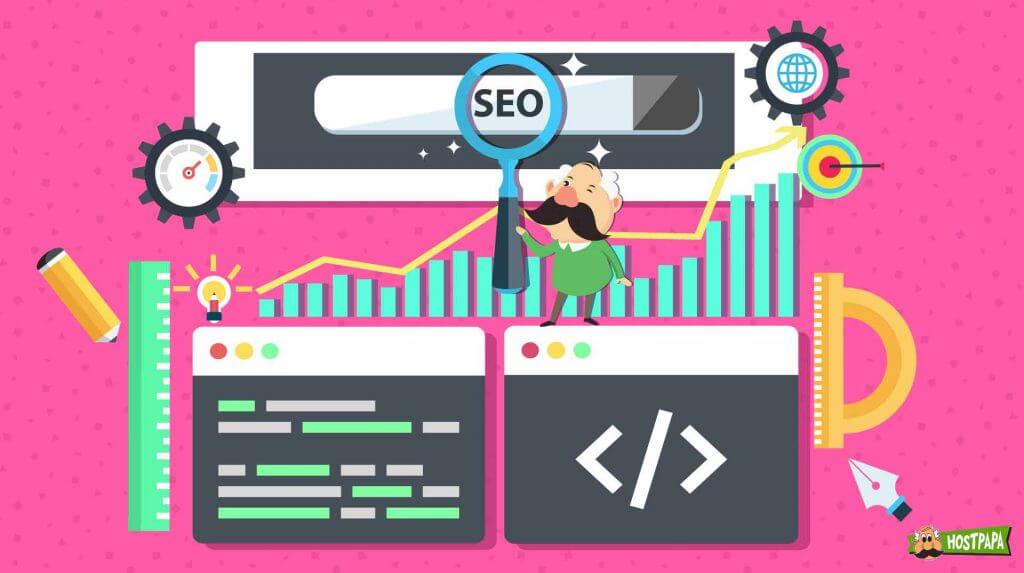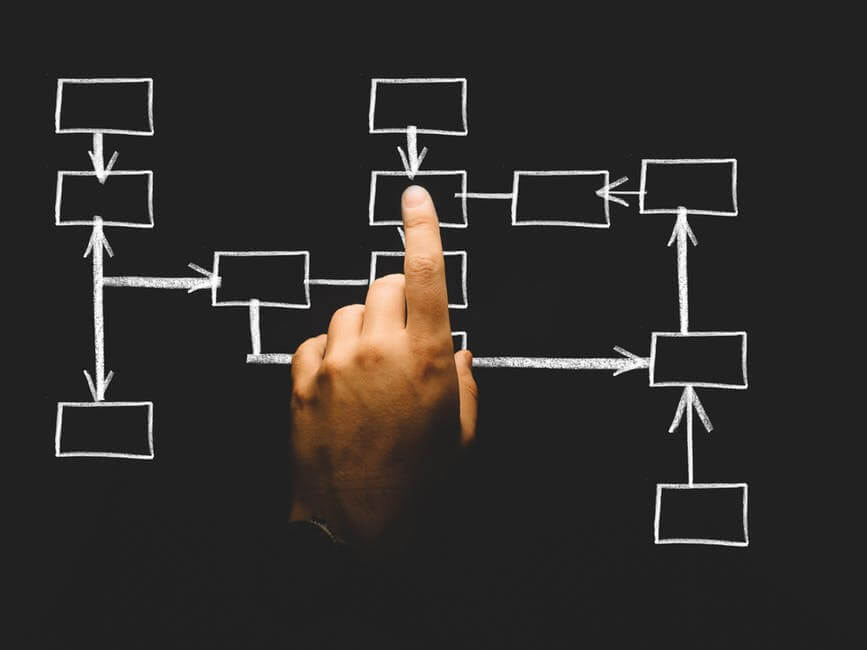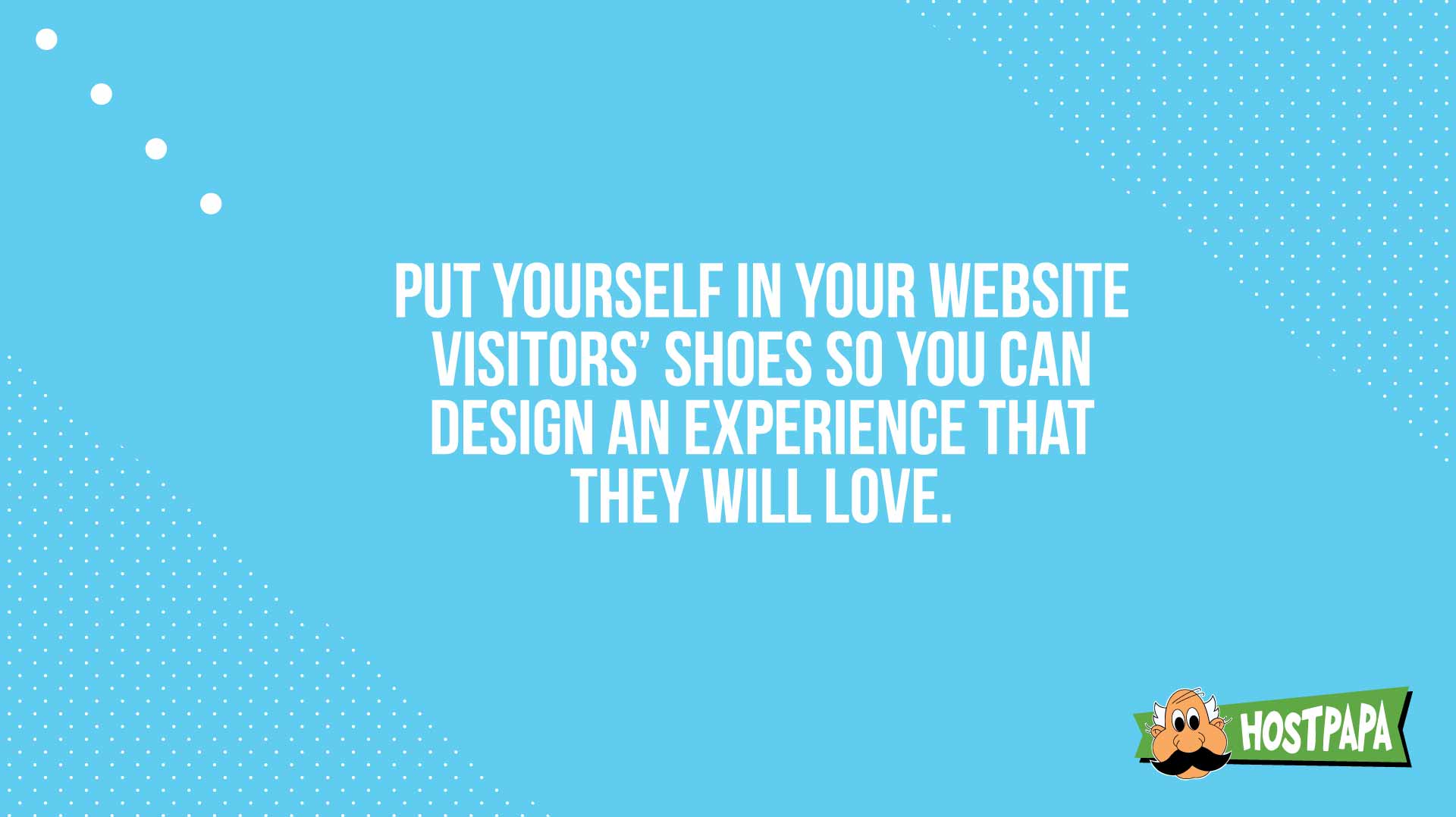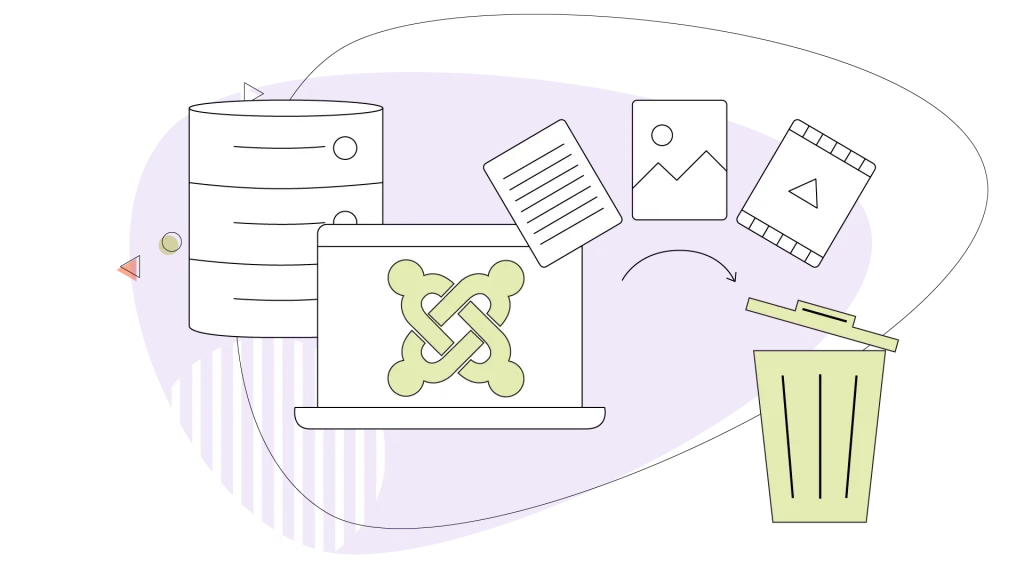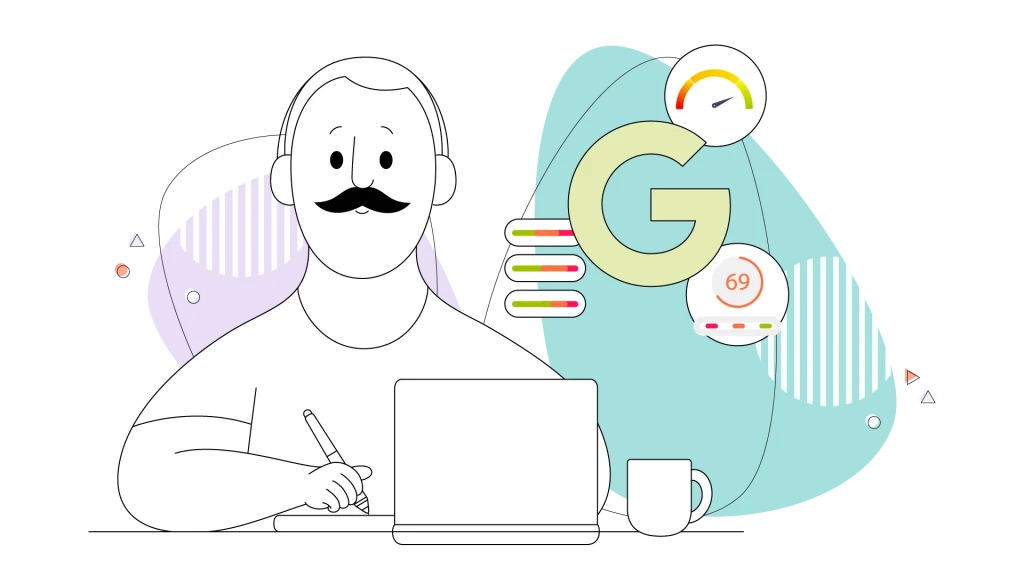Search engine optimization and web design: you simply can’t do one well without the other. They’re like two sides of the same coin, and if you’re a small business owner, you must understand their relationship.
Statistics show that in just 2 seconds, you usually lose about 12% of the people who click to visit your website. And at 4 seconds, you lose about 25%
If you’ve spent the last six months trying to get your website on the first page of Google for a keyword, your efforts will go to waste if your website design doesn’t capture the interest of its visitors. And consequently, if your website design isn’t great, your SEO efforts won’t last long either.
However, the relationship between the two isn’t as simple as that! And that’s exactly what we’ll cover in this blog article, so you can be empowered to build a website that serves its purpose!
Before we start looking at the specifics of the relationship between web design and SEO, you need to ensure you’ve got the basics covered.
- Never overlook how essential it is to have a great domain name. The domain name tells website visitors what to expect when they land on your website. Imagine typing “chocolaty.com” and ending up on a website about electronics. That wouldn’t go well, would it?
- Never underestimate the importance of great hosting! Your hosting provider brings the ‘house’ where your website lives. The stronger the house, the better it is for both web design and SEO.
- Ensuring Your Site Is On Google Search Results
- Information Architecture
- Responsive Design
- Page Speed
- User Experience
- Content Marketing Funnel
- Image SEO (Adding Text Into Them)
- Conversion Rate Optimization (CRO)
- Eliminate Unnecessary Pop-Ups Or Illegible Text
- Crawling & Accessibility
- Create Unique Descriptions For Each Page
How to Make Sure Your Website Design and SEO Work Well Together
As promised, these are the top things you need to watch out for in web design and SEO because they can ensure you’re making the most out of your site and your online content.
#1: Ensure Your Site Is On Google Search Results
First things first – before we even start compiling your checklist, we need to determine whether our site is available and visible on Google’s search results.
Being in Google’s index means that your website is being recognized and listed by Google’s search engine. If your site is not indexed, it won’t appear in search results, which can negatively impact your SEO efforts.
By checking if your site is indexed, you can identify potential issues and take steps to fix them. This includes submitting your sitemap to Google, optimizing your website’s structure and content, and ensuring that your site is free from technical errors that may prevent it from being indexed.
In addition, monitoring your site’s indexing status can help you to track the effectiveness of your SEO efforts and make adjustments as needed. This can include regularly updating your content, building high-quality backlinks, and improving your website’s user experience.
Overall, understanding and monitoring your site’s indexing status is essential to optimizing your website for search engines and ensuring that your content reaches your target audience.
#2: Information Architecture
The best way to think about information architecture is the same way you think about your desk. It has a tabletop, drawers, folders within the drawers, documents in the folders, and text in the documents. The neater you keep your desk, the more productive you’ll be!
Your website needs to be organized similarly, so search engines can ‘crawl’ it smoothly and produce the result the user is looking for. The easier you make it for search engines to crawl your website, the higher its ranking will be on the search results page!
Information architecture is how the content and data are organized on your website. It should be easy for your users to navigate their way around it and for search engines to crawl it. Some important matters here include:
- Internal Links: Use internal links within your website wisely, and ensure none are broken or non-functional. Your internal links should lead somewhere so your website’s information is well synchronized.
- Link Structure: The easiest way to analyze your internal website structure is to go to Google Search Console, then go to Search Traffic and click on internal links. According to Neil Patel, if the pages on top of the list are the ones you’d like search engines to display, you’re on the right track!
- Header tags: Organizing your content in sections with their own title tags can be helpful for search engines to crawl and get specific information from your website. Similar to how we organize items into drawers for easy access, splitting your copy into sections helps us locate them quickly when needed. And it’s also easier to create a table of contents later on.
Optimizing your internal link structure is part of Googlebot optimization. When your internal links are well structured, you increase your website’s ‘crawl ability,’ improving its internal design and leading to better SEO.
#3: Responsive Design
In 2018, over half of the global traffic was mobile. People use a combination of tablet, mobile and desktop devices, and it’s a no-brainer to build a website with a responsive design.
You want to avoid being in a situation where your website is only built for desktops, and when people search for it on their mobile devices, it appears illegible. That would be a design disaster causing your bounce rates to go through the roof and ruining your SEO efforts.
Responsive design ensures your bounce rates are under control, leading to better SEO results. Make no mistake about this! More importantly, Google uses ‘mobile first’ indexing as the starting point for search engine rankings. That means that Google will first crawl the mobile version of your website before it crawls the desktop version to determine your website’s search engine rank. The following diagram from Moz sums it up nicely:
#4: Page Speed
If you’ve visited a website that loads slowly, you know how frustrating it can be. To build a website for success, you need to ensure it isn’t cluttered with data and has no large images slowing it down. Use Google’s mobile-friendly test, which tells you about your website’s mobile friendliness, mobile speed and desktop speed.
Google PageSpeed is a collection of tools geared toward making the web faster. Using page speed CDN integration can work magic in enhancing the speed of your website. PageSpeed Insights is the starting point to getting the insights you need to optimize your website for speed and enhanced usability.
Downloading the Pagespeed module and setting up your KeyCDN zone will ensure your website is well-configured for speed so that you can make further improvements to your user experience.
#5: User Experience
The most important aspect of web design is the user experience it provides. As Steve Jobs said:
“Design is not just what it looks like and feels like. Design is how it works.”
This means it’s imperative that you put yourself in your website visitors’ shoes, so you can design an experience that they will love. A great layout that’s intuitive for users to navigate will ensure they don’t have to overthink while browsing your website. If your users get confused, it’s clear you need to change something about it.
Design a website that works well, looks good, feels good, and delights users. A high-quality web design will ensure your customers feel engaged, and lower bounce rates will inevitably lead to better search results.
#6: Content Marketing Funnel
Another important consideration demonstrating how SEO and web design are related is the content marketing funnel of your website. Ideally, you want to lead your visitors down a path that begins with awareness, continues with engagement, and ends with conversion.
That means that the first stage of the website marketing funnel should consist of content that tells your visitors who you are, what you do, where you are and anything else they need to know about you or anything that captures their interest. This could be blog articles, webinars, or website copy.
The next stage in the marketing funnel is when your website visitors consider your offer. This consists of content like case studies, eBooks or user guides, which educate your prospects about your offer and the benefits they will get from it.
The final stage your website visitors should enter is when they’re converted into leads, prospects or customers. This could be via email subscription pop-ups, customer reviews, signing up for product demos or anything else that qualifies them to be someone your business can deal with.
By having your content organized in this way, you ensure your web design and content marketing work hand in hand, so your website works like a marketing machine. It’s important to note that one should never compromise on the quality of content. While you should include keywords, don’t overdo it, or it may adversely affect your SEO endeavours.
#7: Image SEO (Adding Text Into Them)
Optimizing your images is another key to both web design and SEO success. By publishing your images in the ideal image size, providing an image name that clearly describes what the image is about, including an image description (ALT text) and meta description, you’ll dramatically improve website loading times and make the images searchable, which will have a positive effect on your SEO efforts. A meta description will also help you more if you own an eCommerce website since you can send more product information to the person searching online.
Consider adding your images and image descriptions from your web pages to your XML sitemap to make it easier for Google to search your website for relevant keywords. This will provide your website with the much-needed SEO boost, creating a healthy partnership between design and SEO strategy.
#8: Conversion Rate Optimization (CRO)
This is probably the most important consideration in web design and SEO. It makes the relationship a direct, easy-to-understand one. CRO is the science and art of optimizing your website design for user conversions, and all web designers should consider it.
CRO covers things like the colours you use on your call-to-action buttons, the design layout, the pop-ups, and anything else that helps with ‘micro conversions’ on your website. Micro conversions could include email newsletter signups, watching a video on your website, a purchase or any action you’d like the user to take when they’re on your site.
Google tracks these micro conversions for SEO purposes. The higher the number and frequency of these micro conversions on your website, the better your search engine results will be. Why? Because micro conversions tell Google that people not only just visit your website, they actually take some action when they visit it. And that’s worth more than a website that looks great but doesn’t excite visitors enough to take action!
#9: Eliminate Unnecessary Pop-Ups Or Illegible Text
Some websites like to bombard their visitors with pop-ups from the second they are on it. It’s similar to being approached by a sales consultant the minute you walk into a retail store.
While you may have the best intentions for your customers, too many pop-ups can come across as ‘salesy’ to your website visitors. Understandably, you may want website visitors to leave their personal details as soon as possible, but the timing of these pop-ups or alerts can make or break the user experience.
For instance, if you see a pop-up asking you to leave your email address from the second you’ve opened a website, even before you’ve started reading the home page, the chances of you losing interest are extremely high.
On the other hand, if you only see a pop-up at certain key moments while browsing the website, or scrolling beyond a certain point, then a pop-up may enhance your user experience, so you can voluntarily provide your details if you wish to be contacted.
Ensure you time your pop-ups well and eliminate illegible text on your website. The last thing you want is to annoy your prospects!
#10 Crawling & Accessibility
Making your website more search engine-friendly is more than just great content and strategic keywords. You also need to consider how easily search engines can crawl and index your site and how accessible it is to all users.
Crawling is how search engines discover and analyze your content. If your site isn’t easily crawlable, search engines may not understand what your site is about, leading to poor SEO rankings.
Accessibility ensures all users can navigate your website, including those with visual, hearing, or mobility impairments. Designing with accessibility ensures everyone has equal access to your content.
By prioritizing crawling and accessibility, you can improve your website’s SEO and reach a wider audience. Create a sitemap, use descriptive page titles and headings, add alt tags to images, and ensure your site is mobile-friendly and easy to navigate. Improve the overall user experience and boost your SEO efforts.
#11 Create Unique Descriptions For Each Page
An SEO-friendly website goes way beyond having quality content and strategically using keywords. It also ensures that your site can be easily crawled and indexed by search engines and accessible to users with disabilities.
Crawling is the process by which search engines discover and analyze the content on your website. If your site is not easily crawlable, search engines may not be able to find all of your pages or may misunderstand your content. This can negatively affect your SEO rankings.
Accessibility refers to how easy it is for people with disabilities, such as visual or hearing impairments, to use and navigate your website. By designing your website with accessibility in mind, you can ensure that all users can access and enjoy your content.
To improve your website’s SEO and reach a wider audience, it’s important to incorporate crawling and accessibility considerations into your web design process. This includes creating a sitemap, using descriptive and meaningful page titles and headings, adding alt tags to images, and ensuring your site is mobile-friendly and easy to navigate. Prioritizing these factors can improve the overall user experience of your website and boost your SEO efforts.
Wrapping It Up
Ironically, sometimes SEO and web design goals can conflict with each other. While using lots of text with relevant keywords naturally sprinkled across can help your SEO, it can be horrifying for users with a short attention span to see a large volume of text with no images or neatly designed elements.
The other important consideration is that there’s no point in doing great SEO so people find your website easily, only to leave it at first sight if your design is repulsive. There’s also no point in having the most beautiful website, with the perfect user experience, if nobody can find it when they need it.
The smart approach is to begin thinking about SEO and web design right at the start of building your website. Understand the dynamics of the relationship between SEO and web design to craft a website that’s loved by users and appreciated by search engines.
Have you enjoyed this post? Hop over to the HostPapa blog to read more articles like this one!
